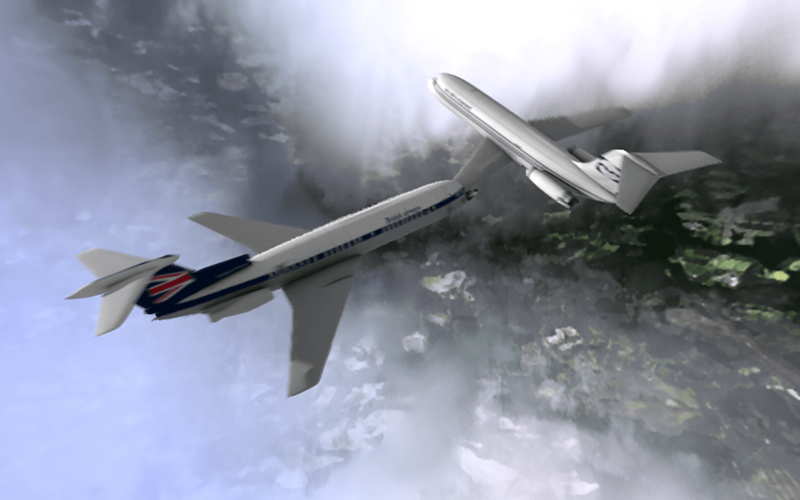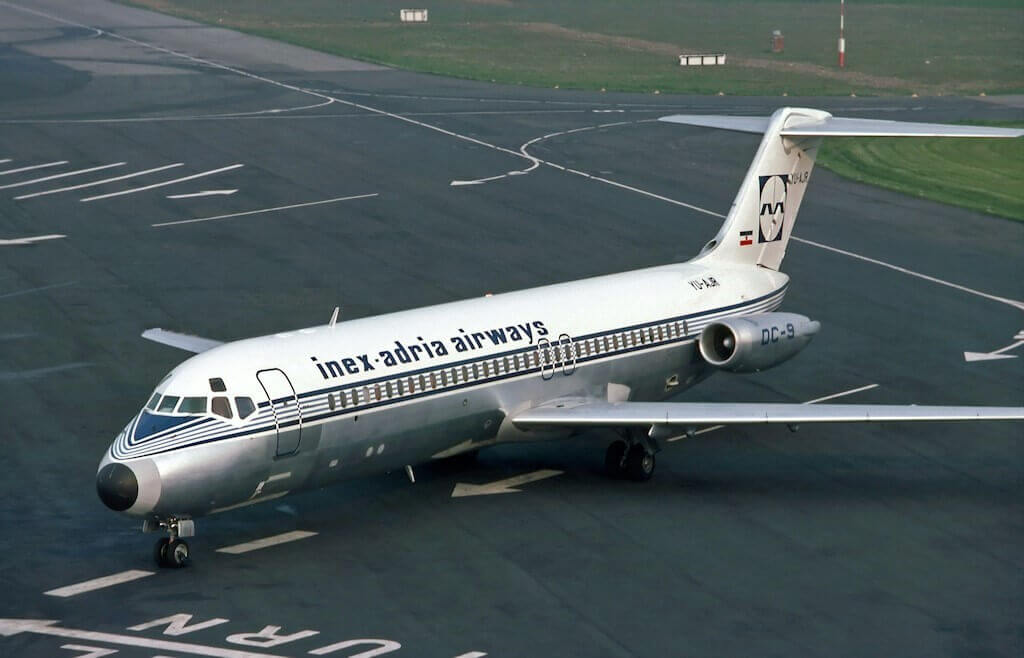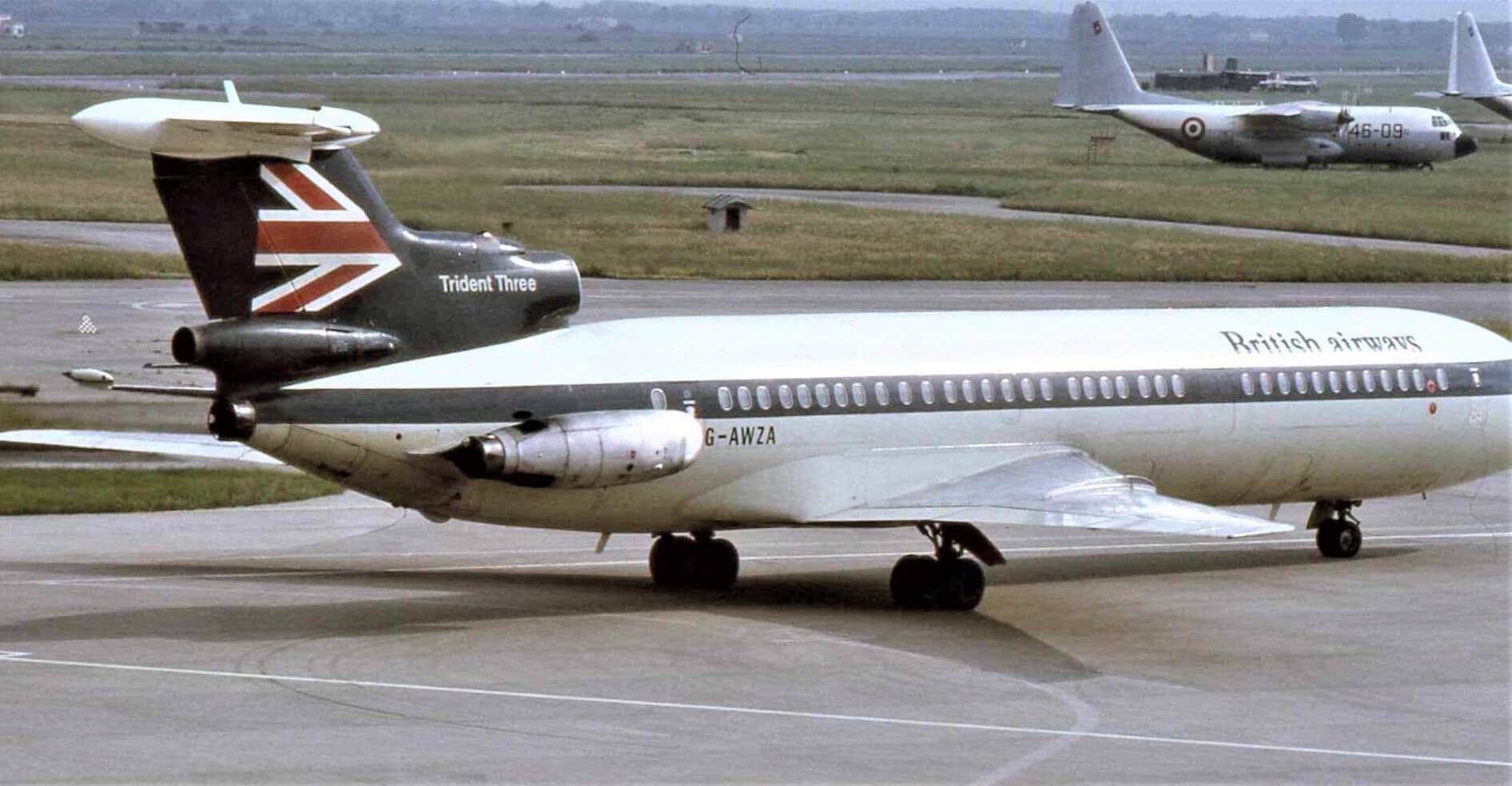47 years ago, on September 10, 1976, two aircraft collided over Croatia (formerly Yugoslavia) killing all 176 people. At the time, it was the world’s deadliest mid-air collision.
British Airways Flight 476, a Hawker Trident aircraft, was en route from London Heathrow to Istanbul, Turkey carrying 54 passengers and nine crew.
Inex-Adria Flight 550 was a Douglas DC-9 aircraft carrying 108 passengers and five crew. Flight 550 departed Split, formally Yugoslavia, bound for Cologne, West Germany.
Inex-Adria Douglas DC-9. Image by Philip Pain
British Airways Flight 476 was cruising at FL330, while Inex-Adria Flight 550 was cruising at FL260. The two aircraft were flying opposite courses and were expected to cross over one another at Zagreb.
At 10:07 UTC, ATC gave clearance for Flight 550 to climb to FL350, and at 10:14:07, on reaching Zagreb, Inex-Adria contacted ATC to inform them of its present position and passing FL327.
Controlled airspace is split into sections, like the tiers of a wedding cake, based on altitude. Unfortunately, the Inex-Adria flight was climbing from the middle section into the upper section, monitored by separate controllers.
At this moment, the controller, realizing that the two aircraft were on a collision course, with seconds until impact, reverted to his native language to instruct the DC-9 to stop climbing.
A British Airways Hawker Trident in Italy in 1975. Image by Piergiuliano Chesi, CC BY-SA 3.0
Tragically by the time Flight 550 had levelled off, it had just reached FL330, the exact altitude of the British Airways crew who, owing to the use of non-standard language by ATC, were totally unaware of the unfolding events.
At approximately 10:14:40 UTC, the DC-9’s left wing sliced through the flight deck and forward fuselage section of the British Airways Trident. The explosive decompression caused the Trident aircraft to disintegrate while the DC-9, now with a stricken wing, entered a nosedive before impacting the ground.
A nearby Lufthansa Boeing 737 was only 15 miles behind the Trident and witnessed the collision, describing it as a flash of lightning followed by a ball of smoke.
Collision Avoidance, TCAS
Today mid-air collisions are a rare occurrence. Following disasters such as Zagreb, technology was developed for both aircraft and ATC to act as both a preventative and a final safety net. One such development was TCAS.
TCAS, or Traffic Collision Avoidance System, is now a requirement for all large aircraft. The history of avoidance systems dates back to the 1950s following the Grand Canyon mid-air collision, but it was not until 1981 that the FAA implemented TCAS.
TCAS I provides information about other traffic, displayed to the pilots on their instrument displays. Proximate Traffic (within 6nm and 1200ft vertically) is displayed in the form of a solid white or blue diamond showing altitude separation and trend.
For potentially conflicting traffic TCAS I provides a Traffic Advisory (TA). The system shows the conflict as an amber or yellow circle with an aural warning ‘Traffic Traffic’. The pilots are then expected to perform an evasive maneuver to avoid the traffic.
Today, TCAS II is installed on large aircraft. TCAS II provides all the functions of TCAS I using omnidirectional aerials on the upper and lower fuselage to act as an air-to-air surveillance system, monitoring other aircraft within range and using flight data such as altitude and speed to calculate relative closure rates and separation.
If both aircraft are fitted with a Mode S transponder (EU regulations require all aircraft operating in accordance with Instrument Flight Rules to have Mode S) a Resolution Advisory (RA) is presented as a red square on the instrument display when an aircraft is within 15-35 seconds of conflict.
In the event of a Resolution Advisory, pilots must follow TCAS, which takes precedent over any ATC instruction. The importance of following TCAS RAs was made all too clear on July 1, 2002, when a DHL Boeing 757 collided with a BAL Tupolev 154 aircraft killing 71 people.
TCAS gave RAs for the DHL crew to descend and for the BAL crew to climb. However, ATC instructed the BAL crew to descend. With conflicting instructions from TCAS and ATC, the BAL crew followed ATC and began to descend, eventually colliding with the DHL aircraft.
This article was first published on September 16, 2022.



